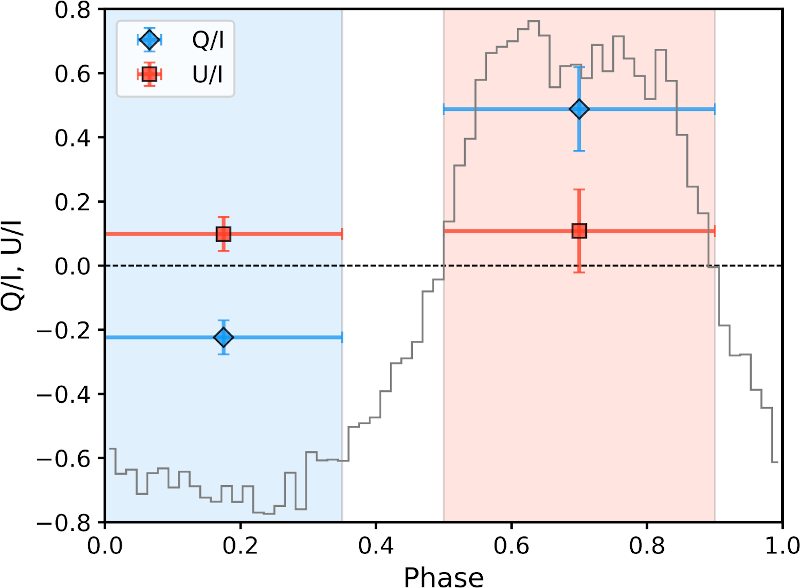NICER / ISS Science Nugget
for December 28, 2023
Timing to Disentangle
Rapidly rotating and strongly magnetized neutron stars drive energetic radiation in the form of electron and positron "winds" into their immediate surroundings. These particle streams emit light across the electromagnetic spectrum, from radio waves through gamma rays, appearing as diffuse and wispy structures that surround the neutron star and, in some cases, outshine its lighthouse-beam pulsations. The Crab Nebula, which formed in a supernova explosion observed by astronomers in the year 1054, is the most famous example of such a "pulsar wind nebula" (PWN). A near-twin of the Crab is the pulsar + nebula known as PSR B0540-69 in the Large Magellanic Cloud, a dwarf galaxy neighbor to our Milky Way. Because PSR B0540 is nearly 25x more distant than the Crab, it appears much fainter and smaller, and the PWN is difficult to resolve in images obtained by most X-ray telescopes. But B0540's rapid X-ray pulsations, at a rate of 20 pulses per second, have been observed and accurately timed by NICER since the start of the mission, in support of a variety of science objectives including multiwavelength (radio, optical) studies and even searches for gravitational radiation from the rapidly spinning star.
In 2022, NASA's Imaging X-ray Polarimetry Explorer (IXPE) spacecraft experienced a timing anomaly: its onboard clock drifted and jumped at the sub-second level. To enable continued study of PSR B0540 and other timing-sensitive targets with IXPE by providing a timing reference, NICER increased the cadence of its B0540 monitoring and scheduled several near-simultaneous observations. Results of the joint study, led by F. Xie (Italian Natl. Inst. for Astrophysics and Guangxi Univ.), were recently accepted for peer-reviewed publication in The Astrophysical Journal. The team reports the first measurement of polarized X-ray emission from both the nebula and in the pulsations from the neutron star. To distinguish the two, they used NICER's long-term pulse timing model - the baseline pulsation rate and its slow evolution with time - to "fold" IXPE's detected photons with the pulse period at the time of each observation, accumulating a pulse profile that spanned the full dataset. In this way, the data could be divided into "on pulse" and "off pulse" phases, where X-rays detected during the off-pulse portion, when the pulsar beam is pointing away from us, could be attributed to emission from the otherwise-unresolvable nebula. The result showed that some 25% of the nebular emission is linearly polarized, with the electric-field vector of the radiation pointing due East as seen from Earth, both consistent with past visible-light polarization measurements. As for the on-pulse portion, more than half of the emission is polarized, with position angle pointing approximately toward the North. Such measurements - only a handful are available for young, rotation-powered pulsars - offer valuable insights into the geometry and physical processes associated with the acceleration of particles and generation of bright beamed emission in the unique magnetospheres of neutron stars.


Left: The pulse profile of PSR B0540-69 (gray stepped trace) is used to define on-pulse (red shading) and off-pulse (blue shading) phase ranges to distinguish between the pulsar beam and emission from the compact nebula surrounding the neutron star. The full pulse period is 50.5 milliseconds. Averaged over each interval are measurements of polarization expressed in terms of three "Stokes parameters": I, the total intensity, and Q and U - orthogonal components of linear polarization that, when combined in different ways, yield the degree and orientation of polarized emission. (Figure credit: Xie et al. 2024)
Right: Polariization degree (radial axis) and orientation (azimuthal) for pulsed emission in four phase intervals (legend, top right). (Figure credit: Xie et al. 2024)
<< Previous
Main Index